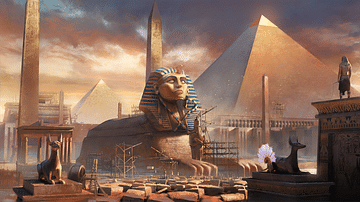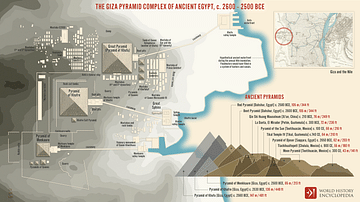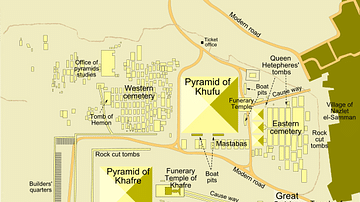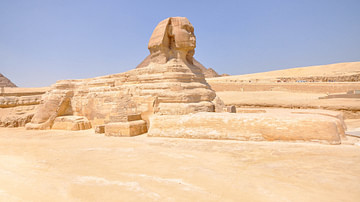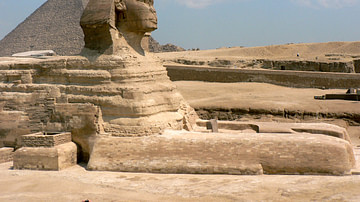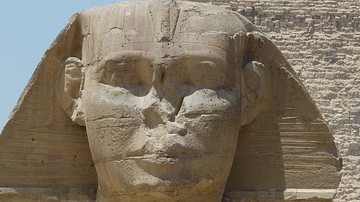Illustration
The Great Sphinx at Giza represents the 4th Dynasty ruler, Khafra, with a body of a lion guarding his pyramid. A thousand years later, the Sphinx had come to be revered as a god called "Horemakhet", which means "Horus in the horizon". Some pharaohs repaired and renewed already ancient monuments and they duly advertised their sacred work. In the 18th Dynasty, Prince Thutmose fell asleep in the shadow of the Sphinx. It purportedly spoke to him in a dream, promising Egypt's throne but pleading to be freed of accumulated sands. On taking the throne, Thutmose IV did clear and repair the Sphinx. The plaited beard was likely his work. The new beard had a curvy tip, which identifies the wearer as a god. The original beard from Khafra's time would have been straight- a king's. The adapted beard eventually broke off, but fragments were found between the front paws in the 19th century. Other portions are now in the Egyptian Museum in Cairo. 18th Dynasty, probably reign of Thutmose IV, circa 1400-1390 BCE. From Giza, Egypt. (The British Museum).
Cite This Work
APA Style
Amin, O. S. M. (2016, July 21). Beard Piece of the Great Sphinx. World History Encyclopedia. Retrieved from https://www.worldhistory.org/image/5392/beard-piece-of-the-great-sphinx/
Chicago Style
Amin, Osama Shukir Muhammed. "Beard Piece of the Great Sphinx." World History Encyclopedia. Last modified July 21, 2016. https://www.worldhistory.org/image/5392/beard-piece-of-the-great-sphinx/.
MLA Style
Amin, Osama Shukir Muhammed. "Beard Piece of the Great Sphinx." World History Encyclopedia. World History Encyclopedia, 21 Jul 2016. Web. 18 Apr 2024.


